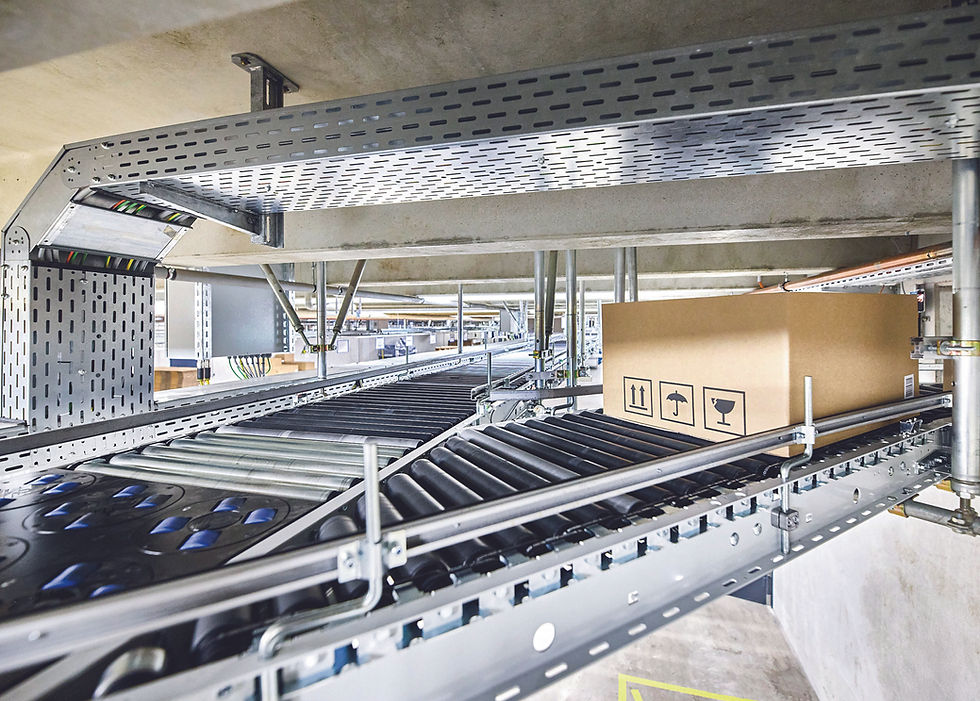Streamline Automated Test Systems with Integrated Measurement Tech
- Alec Abkemeier

- Dec 11, 2024
- 3 min read
Updated: Jul 3
This Beckhoff USA webinar measured all the possibilities of system-integrated DAQ solutions and explained why they pass the test over standalone alternatives

Traditional DAQ platforms don’t always fully capture all requirements in automated test applications. This leads to difficulties in managing, maintaining, and troubleshooting. So, Beckhoff takes a different approach to solving unique requirements.
In my recent webinar – Measure It with Beckhoff! – I explained how DAQ solutions that are integrated with a standard automation system enable engineers to achieve precision measurements and simplify test solutions. The presentation explored how TwinCAT software, ELM I/O terminals and supporting EtherCAT technologies deliver lab-level test measurements in one unified environment encapsulating PLC, motion, safety, database connectivity, and more.
As a recap, let’s explore some of the underlying issues, then look at the hardware and software capabilities in Beckhoff’s integrated solution. At the end, I’ll answer some of the top questions that came up during the webinar.
You can also fill out the form to watch the full on-demand webinar below:
Different approaches to automated test and measurement
Today’s test systems are growing more sophisticated at a rapid pace. But the legacy measurement technologies that engineers in this field relied on lack a unified, scalable, and versatile platform to draw all components together for automated test. From sensing devices, vision components and product handling to scaling I/O for various functionalities, modern test setups often require a patchwork of communication interfaces, protocols, and separate controllers. That leads to higher design costs and complexity.
In contrast, Beckhoff is powering its measurement technology with its well-known system-integrated and open approach to industrial automation. This strategy aims to minimize complexity. By integrating high-end data acquisition directly with other automation system functionalities, we can eliminate the need for extra subsystems and components. This allows engineers to manage time-critical measurements seamlessly, while easily managing various interfaces and protocols.
Measurement hardware capabilities
When it comes to the measurement hardware, Beckhoff’s measurement chain starts at the module level. We don’t manufacture sensors, but we do support a wide range of standard interfaces, from voltage and current to vibration analysis and strain gauge/load cell analysis, with sampling rates up to 50 kHz all at a 24 bit signal resolution. We offer a wide variety of EtherCAT Measurement Terminals, such as the ELM series, basic analog, and machine mountable measurement boxes. These feature hardware filtration, high-resolution A/D conversion, and onboard preprocessing like digital filtering, user calibration, free scaling, and more.
A key advantage of Beckhoff's approach is the use of eXtreme Fast Control technology (XFC), which is an extension of EtherCAT capabilities – primarily Oversampling and Distributed Clocks. The Distributed Clocks concept in the EtherCAT functional principle allows devices to synchronize measurements across great distances, eliminating cycle time issues. Oversampling then provides finer feedback control. As an example, applications like high-volume weight dosing give stability to the manufacturing process and reduce negative effects of over- and under-providing product.
Complete Software Integration in TwinCAT
What about after you’ve captured the sensor data? TwinCAT 3 automation software seamlessly integrates signals acquired through the measurement hardware into the engineering and runtime environment. This allows users to leverage TwinCAT's built-in visualization, filtration, and signal analysis tools, as well as the ability to interface with key external platforms like MATLAB and LabVIEW™.
My demonstration during the webinar walked through the steps of creating this measurement chain. I started with configuring measurement terminals and oversampling in TwinCAT. I then showed how to design custom filters within the software and apply them directly to the hardware, allowing users to optimize signal quality.
Real-World Application Examples
Deploying a system-integrated test and measurement solution isn’t just theoretical. We’ve seen countless examples deployed in the field, and I highlighted two during the webinar. The first example showed a condensed system with various functionalities consolidated onto a single automation controller. The second highlighted the use of EtherCAT to reduce long sensor cabling, a common challenge in large-scale test setups.
Beckhoff's all-in-one approach to measurement and automation simplifies the complexity of modern automated test systems. By integrating high-end data acquisition, advanced synchronization, and powerful software tools, engineers can streamline their measurement workflows and focus on the core challenges of their applications. Are you ready to put this technology to the test?
Ready to optimize your test and measurement applications with system-integrated solutions? Contact your local Beckhoff sales engineer today.
And don’t forget to check out our upcoming webinars to register for more!

Alec Abkemeier is the Software Product Manager – Test and Measurement at Beckhoff Automation LLC



Comments